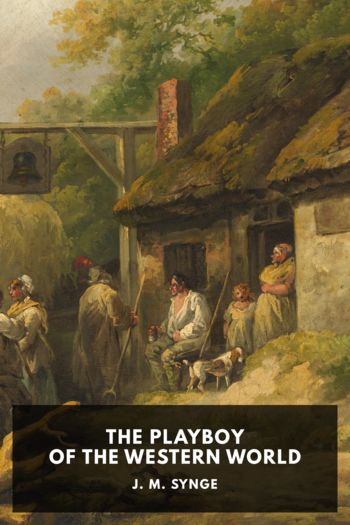Coconut Chaos by Diana Souhami (best ereader for pdf TXT) 📗

- Author: Diana Souhami
Book online «Coconut Chaos by Diana Souhami (best ereader for pdf TXT) 📗». Author Diana Souhami
In violent weather on the evening of 22 June, six weeks after leaving Tahiti, the Resolution with nine men on board got separated from the Pandora and swept out to sea.
It was armed with blunderbusses and muskets and had netting over the decks to prevent boarding, but its supply of fresh water and provisions was on the Pandora waiting to be winched down. Edwards burned false fires and fired guns, but in the storm the men on the schooner could neither see nor hear these. They had two quadrants and two books – Elements of Navigation and Geographical Grammar – but no charts. They knew they were near the Samoan Islands and they hoped to get to Nomuka and meet up again with the Pandora. Within hours they were attacked by Polynesian fishermen in canoes. They shot many of these fishermen dead.
Again a group of men, making their way towards what they hoped might be home, endured the chaos of the ocean, starvation and extremes of thirst and went to the edge of disaster and death. The seemingly straightforward venture of transporting plants from one part of the world to another was lost in time. The chance ramifications of Christian’s temper loss fractured yet more lives.
At Tofua, which they mistook for Nomuka, they traded nails for food and water but were again attacked. Tribesmen tried to take their boat. Unsure of where they were, for weeks they sailed round the Friendly and Fijian Islands, then northwest through the Endeavour Strait and the islands of Indonesia. They scavenged food from deserted beaches and were skeletal when they reached the Great Barrier Reef. They didn’t know of a passage through it and believed their options to be death by famine or shipwreck. They beat their way over the reef and were saved from starving by the crew of a Dutch vessel who sighted them and gave them food, water and supplies.
After four months they reached the Dutch province of Surabaya on the north coast of Java. They thought they’d reached a safe shore, but the governor didn’t believe their story of separation from the Pandora. He had Edwards’ description of Christian and the missing mutineers from the Bounty. The crew of the Resolution corresponded in number, spoke only English, were in a hand-hewn boat made from Polynesian wood and couldn’t produce any official papers. He concluded they were the wanted men and kept them in prison for a month, then sent them under armed guard to Samarang. But with all such vicissitudes, within the relative framework of what constitutes good luck, those nine men did better than most of the others on the Pandora.
For three months Edwards cruised the islands of the South Pacific searching for the Bounty and the missing mutineers. He then gave up hope of finding them and headed home. On 29 August 1791 he reached the Great Barrier Reef. He sent a boat to search for a channel through the reef and into the lagoon. The Pandora tried to follow through this opening but, in the evening dusk and strong seas, drifted past it and hit the reef.
Within five minutes there was four feet of water in the hold. The men threw guns and everything heavy overboard and pumped and bailed all night, but by dawn water had reached the upper deck and the ship was sinking. There were two canoes and four boats – a launch, an eight-oared pinnace and two six-oared yawls – and there were 134 men on board the Pandora. One of the crew tried to lash together the two canoes. He was dashed against the reef. He died and the canoes were lost.
As the ship sank, three of the prisoners – Joseph Coleman the armourer, Charles Norman and Thomas McIntosh both carpenters – were freed from their shackles to work the pumps. The others begged to be unchained and allowed to try to save their lives. Edwards ordered their guards to shoot any who broke free. Men crowded into the boats or flailed in the sea. When the ship lay on its broadside, with the larboard bow completely under water, Edwards passed the prisoners in the box as he made his own escape. Peter Heywood entreated him to have mercy on them. He refused.
But with the ship under water as far as the mainmast and with the box beginning to fill, William Moulter, boatswain’s mate on the Pandora, drew the bolt on the scuttle. And Joseph Hodges, the armourer’s mate, at the risk of his own life unlocked the prisoners’ fetters. He said he’d set them free or drown with them.
In seconds the ship went down. Nothing of it was visible but the tip of its mast. The master-at-arms and the sentinels drowned. Peter Heywood was one of the prisoners who survived. He was haunted by memories. ‘The cries of the men drowning was at first awful in the extreme but as they sunk and became faint they died away by degrees.’
The boats made for a sandy cay four miles from the disaster. When they returned to the wreck to pick up more men there was silence. Thirty-one of the crew and four of the Bounty prisoners had drowned. Naked in the sea Heywood clung to a plank, swam towards the cay and was picked up by one of the boats. James Morrison, builder of the Resolution, though still handcuffed, also managed to stay afloat and reach a boat.
The cay was about ninety yards long and sixty wide and with-out shade. Ninety-nine men reached it. Their only provisions were two casks of water and two bags of bread. Their mouths became so parched they couldn’t chew the morsels available. James Connell, a seaman, drank





Comments (0)